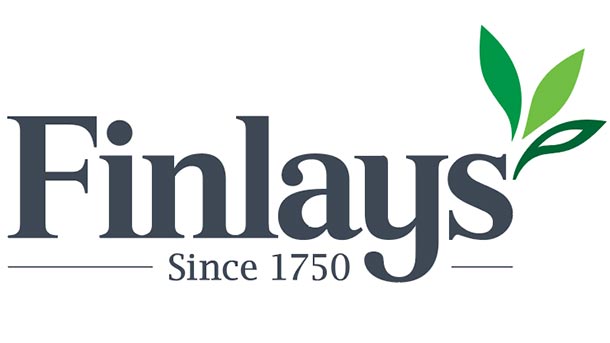Promotional Features
Finlays: Combining heritage and innovation to create novel tea and coffee product ideas
The tea and coffee markets are changing quickly. This year, frozen tea and cold brew tonics are in. Next year will bring new innovation. To navigate this fast-changing landscape, beverage companies need collaborative suppliers that combine heritage and infrastructure with innovation and vision. Only this mix can satisfy consumer demand for traceability, sustainability and novelty. Finlays is a rare example of an extract and ingredient supplier with this blend of characteristics.
Working with ingredient suppliers that have the vision to foresee and shape emerging trends and the research and development capabilities to deliver customer-orientated product ideas that track these shifts yields clear benefits. In recent years, growth in the tea and coffee markets has swung decisively away from certain areas and towards others. Beverage companies on the right side of this swing have seen explosive growth.
Broadly speaking, the premium ends of the tea and coffee markets are booming at a time when the value sector is sagging. Over the 12 months up to June 2017, the size of the value tea sector slipped by about 2%. That decline contrasts with strong growth in the premium and, in particular, the super-premium sectors. More than four-fifths of new entrants to the ready-to-drink tea market are premium products.
In order to capitalize on these trends, companies need to know which niches of the premium and super-premium markets are driving growth and, more importantly, which will do so in the years to come. Finlays devotes a considerable amount of time and energy to answering such questions. Yet, in a market that places a high value on premium, sustainable products with clean labels and traceable supply chains, innovation is only one piece of the puzzle. Heritage is an equally valuable resource.
Building on heritage and expertise
Finlays combines heritage and innovation. The company has been running a bush-to-cup supply chain since long before anyone thought to coin the term. The process starts by selecting locations ideally suited to the growth of tea. Just as the terroir of Bordeaux produces better wines than that of Belgium — and output varies from slope to slope in both regions — the taste of tea is dictated by the land it grows on and the climate it experiences. Finlays understands how these factors affect its products.
As with wine, the skill and knowledge of the tea grower matter, too. The best teams pick the youngest buds and shoots from dew-soaked bushes at the optimum point in their development and quickly transport their harvest to the factory. Here, the fresh, soft, green leaves are carefully handled and turned into viable ingredients. The expertise Finlays has honed over its long history in tea ensures that all the finest qualities of the pure tea leaf are preserved.
Working this way affects both the quality of the product and consumers' perceptions of its merits. The taste and nutrition of tea is dictated by how the plant is grown and processed. Consumers are aware of this fact and place a premium on products that are fresh and functional. Well-handled tea meets this demand.
Production of high-quality coffee demands similar rigor. While effective roasting is critical to flavor and aroma, it captures rather than creates these characteristics. Ultimately, bad beans make bad coffee. That is why Finlays has built an in-house team of global buying experts and examines the beans as they arrive at its facility each day. Finlays roasts the beans that make the grade at its facility, fine tuning the process to deliver the desired aroma and flavor profile.
Investing in innovation
Throughout its history, Finlays has paired well-established, traditional approaches to the growing, picking and handling of tea with an interest in adopting new ways of working. The company began producing tea extracts in Kenya in 1974. That marked the start of a multi-decade global expansion that has established Finlays at the forefront of tea and coffee extracts, in both the ready-to-drink and food service sectors.
The fact Finlays' extracts and ingredients can be used in on-trend beverages is not a coincidence. At Finlays, the R&D scientists and sensory solutions delivery team work closely with the market research department. The objective is to understand the trends driving what consumers will want tomorrow, envisage the products beverage companies will create to meet this demand and then develop ingredients that facilitate development of these drinks.
Finlays involves its customers in this process. The ingredient company spends a lot of time talking to customers about the shape of the market and explaining how its prototypes and innovations fit into the emerging landscape. Working this way increases the likelihood Finlays' customers will both foresee the trends that will shape their businesses and be prepared to meet the shifts in demand.
Staying ahead of these trends requires continued investment, something Finlays has known since it began putting money into tea estates more than 130 years ago.
The next phase of Finlays' ongoing investment in innovation is a global research and development center in Rhode Island. The 28,800-square-foot facility will further enhance Finlays' ability to come up with and prototype new ideas and provide its customers with custom extracts and ingredients.
The values and characteristics of Finlays' future products will differ somewhat from the products it provides today, and significantly from the tea and coffee it began selling more than 100 years ago. Yet, while the details have changed and will continue to do so, the core focus on taking the very best raw materials and using them to create products contemporary consumers want is — and will remain — the same.

